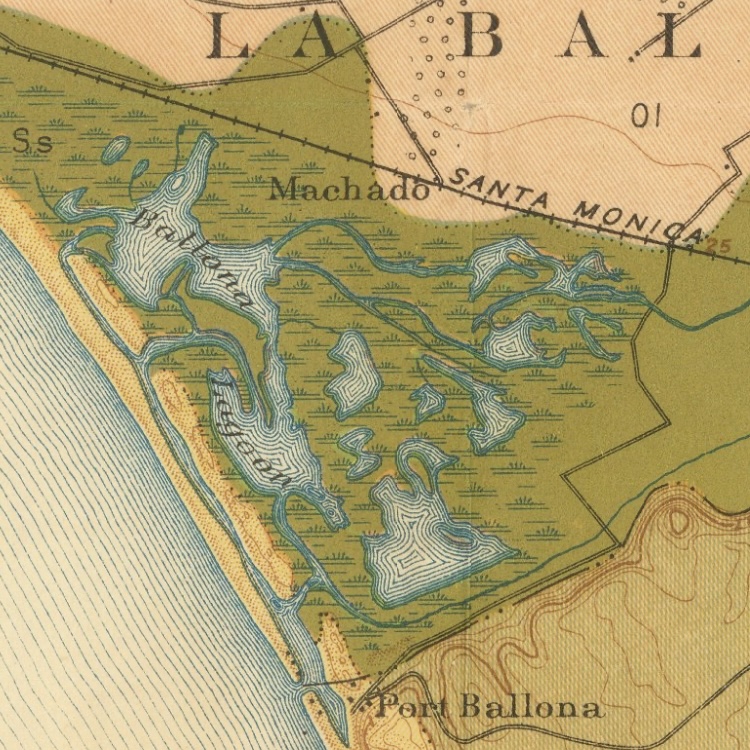|
Ship Cafe (Venice, California)
The Ship Cafe was a landmark of Venice, California, United States, from 1903 to 1946. Built along the Abbot Kinney Pier, Venice Pier over the water off Windward Avenue, the restaurant and event space was known for its sumptuous food and prestigious clientele. The ship was a Novelty architecture, novelty building, set on concrete Deep foundation, pilings, and not actually a sea-worthy vessel. History Constructed by Abbot Kinney beginning in 1903, the restaurant was designed to be a feature of the resort town of Venice. A "first draft" of the Ship Cafe was washed away by a sea storm on March 13, 1905; Kinney hired 600 laborers to rebuild it in time for a summer opening. The restaurant sat on pilings, and was designed by Norman Foote Marsh and Clarence H. Russell to be an approximation of the ''San Salvador (Cabrillo's ship), San Salvador'', Juan Rodríguez Cabrillo's "Spanish galleon". As a tourist guide put it, "It was his thought to moor by the sea-wall this white caravel, to ... [...More Info...] [...Related Items...] OR: [Wikipedia] [Google] [Baidu] |
Abbot Kinney Pier
Abbot Kinney's Venice Pier, also known as the Abbot Kinney Pier, the first Venice Pier, the Windward Avenue Pier, or the Venice Wharf, stood over the Pacific Ocean at Venice, Los Angeles, Venice, Los Angeles County, California, United States, from 1905 until it was destroyed in the 1920 Abbot Kinney pier fire. History Commissioned by real estate developer Abbot Kinney as part of his "Venice of America", the pier was long. The Ship Cafe (Venice, California), Ship Cafe was built at the same time, and was originally intended to be a full-service resort "with sleeping apartments, a restaurant, a kitchen, office and all of the appointments of the modern hotel". The Venice Auditorium performance venue at the end of the pier had 3,600 seats. The Venice Plunge indoor saltwater swimming pool, which was located around the corner on Ocean Front Walk, had 1,500 dressing rooms at opening. The Venice Aquarium was a double-duty tourist attraction and marine mammal research facility. Alo ... [...More Info...] [...Related Items...] OR: [Wikipedia] [Google] [Baidu] |
Del Rey Lagoon Park
Del Rey Lagoon Park is a City of Los Angeles Department of Recreation and Parks, municipal park in the Playa Del Rey neighborhood of Los Angeles, United States, with a lagoon that is part of the greater Ballona Creek watershed. The park features lighted baseball fields, lighted basketball courts and a children’s playground. There is a dedicated parking lot just off Pacific Avenue. Del Rey Lagoon (sometimes called “the duck pond”) covers six acres (24,000 m2 and is long and approximately wide. The depth of the lagoon circa 1959 was four to six feet (1.2-1.8 m). The lagoon is a place where “wild ducks swim beside the domestic varieties that are cast-off Easter presents for city-dwellers’ children.” Among the wild waterfowl is a “large population of Bufflehead, bufflehead ducks, great blue herons and coots.” History Del Rey and Ballona Lagoons were originally part of the same Ballona Creek estuary channel system. The lagoon played host to crew races in the fi ... [...More Info...] [...Related Items...] OR: [Wikipedia] [Google] [Baidu] |
Baron Long
Baron is a rank of nobility or title of honour, often hereditary, in various European countries, either current or historical. The female equivalent is baroness. Typically, the title denotes an aristocrat who ranks higher than a lord or knight, but lower than a viscount or count. Often, barons hold their fief – their lands and income – directly from the monarch. Barons are less often the vassals of other nobles. In many kingdoms, they were entitled to wear a smaller form of a crown called a ''coronet''. The term originates from the Latin term , via Old French. The use of the title ''baron'' came to England via the Norman Conquest of 1066, then the Normans brought the title to Scotland and Southern Italy. It later spread to Scandinavian and Slavic lands. Etymology The word '':wikt:baron, baron'' comes from the Old French , from a Late Latin">-4; we might wonder whether there's a point at which it's appropriate to talk of the beginnings of French, that is, when it wa ... , ... [...More Info...] [...Related Items...] OR: [Wikipedia] [Google] [Baidu] |


